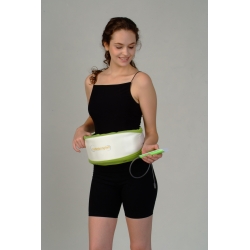Categories
-
 ORTHOPEDICS & ORTHOSES
ORTHOPEDICS & ORTHOSES
-
 HOT - COLD THERAPY & TENS
HOT - COLD THERAPY & TENS
-
 WHEELCHAIRS & MOBILITY
WHEELCHAIRS & MOBILITY
-
 PATIENT LIFTERS
PATIENT LIFTERS
-
 PILLOWS, CUSHIONS & MATTRESSES
PILLOWS, CUSHIONS & MATTRESSES
-
 CLINICAL & DIAGNOSTICS
CLINICAL & DIAGNOSTICS
-
 SILICONE BREAST FORM/BRA & GARMENTS AFTER SURGERY
SILICONE BREAST FORM/BRA & GARMENTS AFTER SURGERY
-
 BEDS & RECLINERS
BEDS & RECLINERS
-
 BATH SAFETY
BATH SAFETY
-
 EXERCISE & FITNESS
EXERCISE & FITNESS
-
 MASSAGERS & BEAUTY CARE
MASSAGERS & BEAUTY CARE
-
 COMPRESSION SYSTEM THERAPY
COMPRESSION SYSTEM THERAPY
-
 DAILY LIVING AIDS
DAILY LIVING AIDS
-
 OSTOMY & INCONTINENCE
OSTOMY & INCONTINENCE
-
 RESPIRATORY CARE
RESPIRATORY CARE
-
 BABY CARE
BABY CARE
-
 ORTHOTIC SHOES & INSOLES
ORTHOTIC SHOES & INSOLES
-
 COVID-19
COVID-19
-
 SPECIAL PRICE ITEMS
SPECIAL PRICE ITEMS
OSTOMY & INCONTINENCE
Colostomy
Sometimes a small part of the colon has to be removed completely or temporarily bypassed. This means that feces cannot pass in the normal way, therefore a stoma needs to be formed to create a new outlet for waste material to be passed. This is done by making an opening onto the abdomen at the front of the body. When it is the colon (the large bowel) that is brought out onto the abdomen the stoma is called a Colostomy.
There are many different types of colostomies and the type of colostomy will depend on the surgical procedure you are having. A colostomy is generally situated on the left hand side of the abdomen below the waistline.
Urostomy
A urostomy is a stoma that is formed to divert urine when the bladder has been removed. The two ureters from the kidneys are plumbed into a small isolated segment of small bowel, which protrudes out from the abdominal wall. The piece of small bowel used will form the urinary stoma. A urostomy is almost always situated on the right side of the abdomen, unless for surgical/technical reasons. When the bladder is removed a urostomy will always be permanent.
Urinary Incontinence is the involuntary excretion of urine.







